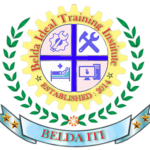COURSE NAME: WEB DESIGN & DEVELOPMENT
A web design and development course typically covers a range of topics related to designing and building websites. Here are the typical details of such a course:
Duration: The duration of a web design and development course can vary widely depending on the depth of coverage, ranging from a few weeks for basic introductory courses to several months for comprehensive programs.
Curriculum: The curriculum of a web design and development course usually includes the following topics:
- HTML (Hypertext Markup Language): The standard markup language for creating web pages and web applications.
- CSS (Cascading Style Sheets): The language used to style the presentation of HTML elements on a web page.
- JavaScript: A programming language that adds interactivity and dynamic behavior to web pages.
- Responsive Web Design: Techniques for designing websites that adapt to different screen sizes and devices.
- Web Graphics and Multimedia: Using images, videos, and other multimedia elements in web design.
- User Experience (UX) Design: Principles and techniques for creating intuitive and user-friendly web interfaces.
- Web Accessibility: Ensuring that websites are accessible to people with disabilities.
- Web Hosting and Domain Management: Basics of hosting websites and managing domain names.
- Content Management Systems (CMS): Introduction to popular CMS platforms like WordPress, Joomla, or Drupal.
- Version Control Systems: Basics of using version control systems like Git for collaborative web development.
- Web Development Frameworks and Libraries: Introduction to front-end and back-end frameworks and libraries such as Bootstrap, jQuery, React, Angular, Node.js, etc.
- Database Management: Basics of database design and management using SQL or NoSQL databases.
- Web Security: Understanding common security threats and best practices for securing websites.
- Search Engine Optimization (SEO): Techniques for optimizing websites to improve search engine rankings.
- Web Analytics: Introduction to tools and techniques for tracking website traffic and analyzing user behavior.
Practical Projects: Hands-on projects are typically included in the course to give students practical experience in designing and building real-world websites. These projects may range from creating simple static websites to developing dynamic web applications.
Examinations and Assessments: Students may be evaluated through assignments, quizzes, tests, and practical projects to assess their understanding of the course material and their ability to apply it in real-world scenarios.
Certification: Upon successful completion of the course and fulfilling all requirements, students may receive a certificate or diploma from the training institution or organization offering the course.
Job Opportunities: Graduates of web design and development courses can pursue various career opportunities in the tech industry, including web designer, front-end developer, back-end developer, full-stack developer, UX/UI designer, webmaster, and more.
Overall, a web design and development course equips students with the necessary skills and knowledge to design, build, and maintain modern websites and web applications, preparing them for a career in the dynamic field of web development.
